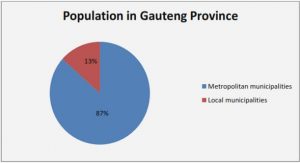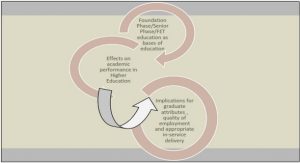Get Complete Project Material File(s) Now! »
The church denomination in which this study is based
This researcher’s reason for going to the history of the Baptist denomination in Zambia to find two heroes of the faith is that very little research work has been done on this, and yet it is certainly one successful story of pioneer missions and church planting on the African continent. The absence of well-researched information came to the researcher’s attention when Baptists in Zambia were celebrating their one hundredth anniversary (1905-2005). The researcher looked in vain for a book that captured this history. Fragments of this history were available in a few theses and books in the libraries of theological colleges and also in the Zambian national archives. But no comprehensive history was available anywhere. Hence, he decided to do the research himself and come up with some comprehensive account. The fruit of this research makes up much of the thesis for his Master of Arts degree (Mbewe, 2007). It was not long into this research before he realised that he had stumbled across some heroic figures and feats that were well-worth documenting and publicising. He also realised that the modus operandi of these heroes of the faith was well worth emulating today (Mbewe, 2007:74). One conviction the researcher got as a result of his Master of Arts research was that the success in planting the Baptist denomination in Zambia was not accidental. It was because of the dedication and deliberate strategy of those who laboured during the pioneer stage of the work. There were many forces against them, which would have made men and women of lesser dedication to have given up the work long before. Finances to keep the missionaries in the field were always a problem, and so many of them had to raise their own finances to remain in the field. The mission field was infested with malaria-carrying mosquitoes, ferocious wild animals, and poisonous snakes. Many missionaries either died or returned home early because of this. Also, in the midst of all this was the need to learn the language of the indigenous people, reduce it into written communication, teach the indigenous people how to read and write, translate the Bible and other relevant books into the language of the indigenous people, etc. While all this was going on, the work of evangelism and discipleship was at the heart of everything. Converts were slow to come in, but the labourers persevered. In due season local leadership began to emerge.
The final withdrawal phase
Finally, the time came when they needed to move a few steps backwards and allow the indigenous leaders to lead the work. Even though they were apostles, they allowed this to happen so that local leadership would own the work without always peeping over their shoulders. One of the immediate areas in which the apostles took a few steps backwards was in the handling of the ordinances—the Lord’s Supper and baptism. When it came to the conducting of the ordinances, the apostles not only shared this responsibility with the new leaders or with those who were part of their missions teams, but they allowed them to do most of that work. This worked in Paul’s favour when there were
personality factions in the church in Corinth, with some claiming to be his followers. Paul could look back and see that he had hardly baptised any of the converts himself, despite the fact that he was involved in the founding of the church in Corinth. He wrote, “I thank God that I baptised none of you except Crispus and Gaius, so that no one may say that you were baptised in my name. (I did baptise also the household of Stephanas. Beyond that, I do not know whether I baptised anyone else)” (1 Corinthians 1:14-16, ESV).
CHAPTER 1 -‐ FOCUS OF THIS RESEARCH
1.1 Introduction
1.2 Problem Statement
1.3 Significance of the Study
1.4 The Hypothesis
1.5 Methodology of the Study
1.6 Limitations of the Study
1.7 Description of Chapters
CHAPTER 2 – MOVING FROM SYSTEMS TO THE SPIRIT
2.1 Introduction
2.2 The paucity of literature on this subject
2.3 Some key concepts defined
2.4 Missionary Methods—St Paul’s or Ours
2.5 Transforming Mission—Paradigm Shifts in Theology of Mission
2.6 A review of other relevant literature
2.7 A Quest for Authentic Practice of Missions in Africa
2.8 Literature on Doke and Kasonga
2.9 Conclusion
CHAPTER 3 – THE EXAMPLE OF CHRIST AND HIS APOSTLES
3.1 Introduction
3.2 The church’s first missionaries
3.3 The Example of Jesus
3.4 The Example of the Apostles
3.5 Conclusion
CHAPTER 4 – THE LIVES OF OLIVE DOKE AND PAUL KASONGA
4.1 Introduction
4.2 The background of Olive Doke
4.3 Doke’s And Kasonga’s Early Labours
4.4 Progress Despite Great Discouragements
4.5 Doke’s Final Labours And Earthly Rewards
4.6 Doke’s Labours After Retirement
4.7 Conclusion
CHAPTER 5 – A TRUE EXAMPLE OF MUTUAL RESPECT AND ADMIRATION
5.1 Introduction
5.2 The background of Olive Doke and Paul Kasonga
5.3 The growing respect and admiration between them
5.4 Kasonga’s leadership finally acknowledged and earned
5.5 Conclusion
CHAPTER 6 – TRANSFORMING PATERNALISM INTO PARTNERSHIP: APPLICATION
6.1 Introduction
6.3 Missionary training and orientation
6.4 The first stage of missions
6.5 The second stage of missions
6.6 The third stage of missions
6.7 Conclusion
CHAPTER 7 – CONCLUSION AND FINAL RECOMMENDATIONS
7.1 The hypothesis proved
7.2 Some pertinent lessons
7.3 Universal application
7.4 Suggestions for further research
7.5 Biographies of Doke and Kasonga
7.6 The baton is now in our hands






